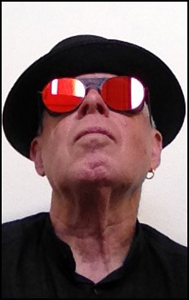Acoustic Guitar Magazine – BY JEFFREY PEPPER RODGERS
19 July 2019 – Over a career spanning five decades, Bruce Cockburn has traversed an extraordinarily wide landscape on the guitar, from fingerstyle folk, country blues, and gospel to edgy rock and exploratory jazz—all in the service of his songwriting muse. What’s even more remarkable is that he’s done all this not just as a bandleader but also as a solo acoustic performer. In Cockburn’s hands, the guitar becomes a true band in a box, delivering powerful grooves, riffs, melodies, harmonized lines, and improvised solos in real time.
And at 74, Cockburn is certainly not done exploring the instrument, as is obvious from a spin of Crowing Ignites, his 34th album and first-ever collection of all new instrumentals (2005’s Speechless compiled previously released instrumentals along with a few new tracks). The title Crowing Ignites is a rough translation of “Accendit Cantu,” which adorns the old Cockburn family crest. As does so much of his music, the album ranges across folk, blues, jazz, and shades in between, with virtuosic playing primarily on six-string, 12-string, and baritone acoustics.
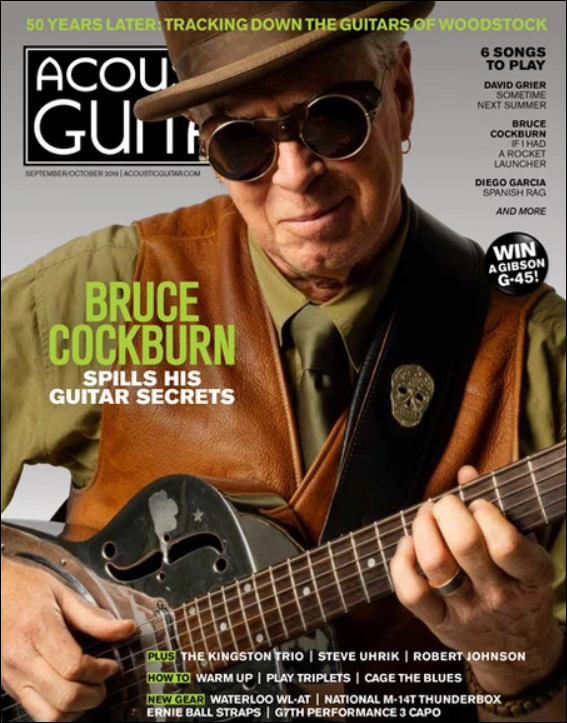
Getting a handle on Cockburn’s multilayered guitar style isn’t easy, even for Cockburn himself. “I don’t think about how I do it—I just do it,” he says on the phone from his home in San Francisco. “But it’s actually quite interesting to try and make it into something communicable.” That is exactly what Cockburn accomplishes in this lesson: He breaks down the key components of his style and demonstrates them through a series of examples drawn from his songs.
Below, you can learn the core guitar parts from some of Cockburn’s best-known songs, such as “Wondering Where the Lions Are” and “Pacing the Cage,” as well as other gems from across his career. At acousticguitar.com, you can not only check out the video of Cockburn sharing excerpts from these songs, but you can see him perform a complete version of “If I Had a Rocket Launcher” (transcribed on page 60 of the print/digital issue) as well as two instrumentals from Crowing Ignites. The result is perhaps the closest and clearest view ever of this guitar master at work.
The Alternating Bass
In Cockburn’s view, the logical way to break down his approach to guitar is not by style or genre—he’s always been dedicated to crossing stylistic boundaries anyway—but by picking-hand technique. Though the details and feel vary, most of his songs can be boiled down to a few right-hand fingerstyle techniques—one of which is the classic alternating bass style, as he learned especially from his early woodshedding with the music of Mississippi John Hurt. He began his video session, in fact, with a verse of Hurt’s “My Creole Belle,” in which the fingers double the vocal melody over the alternating bass—an idea that Cockburn has employed in many songs over the years.
In a similar vein, Example 1 comes from literally the beginning of Cockburn’s recording career: “Going to the Country,” track one on his self-titled 1970 debut. He plays in standard tuning out of G shapes, with his thumb holding down the sixth string at the third fret (more below on his extensive use of the thumb for fretting). The example shows the intro, where he picks a melodic line on the top two strings that harmonizes with the vocal. During the verses, his guitar doubles the vocal melody.
Before taping this session, Cockburn hadn’t played this song in many years and pointed out that he can’t fully reproduce the original recording, on which he used fingerpicks—an approach he soon abandoned. “When I first started using picks I liked the tone,” he recalls. “But I soon discovered that with fingerpicks on, you can’t really do downstrokes with your fingers, because the fingerpicks go flying into the audience’s drink.”
Playing with bare fingers, as Cockburn has done ever since those earliest days, gives the flexibility to combine upstrokes and downstrokes, picking, and strumming. Bare fingers also help create the kind of warm, round tone that was characteristic of Hurt’s music.
Perhaps even more in the Mississippi John Hurt style is “Pacing the Cage,” a luminous ballad from Cockburn’s 1996 album The Charity of Night. In Example 2, capo at the fourth fret and use C shapes—as Hurt himself often did. In the song’s main pattern, alternate the bass between the fifth and fourth strings as the chords move from C to G/B to Fsus2/A. On the treble side, pick double-stops on the first and second strings for the C and G/B, and then add in the third string on the Fsus2/A. In measure 2, Cockburn uses a fourth-finger barre on top of the G/B chord, but you may find it easier (as I do) to use the third and fourth fingers together on those top strings instead.
The alternating bass is also at the root of “Wondering Where the Lions Are,” from his 1979 breakthrough album Dancing in the Dragon’s Jaws. With its infectious reggae-like groove (delivered in the studio with the help of a Jamaican rhythm section), “Lions” became a Top 40 hit in the US. Drop your sixth string to D, capo at the second fret, and try the main rhythm pattern in Example 3. For much of the song, your fretting hand stays five frets above the capo.
Again, you need your thumb for fretting the G shape. “When I was first taking lessons eons ago, I was taught that it was a terrible thing to fret with your thumb,” Cockburn says. “But then I saw some great old blues guys doing it, and I thought, that doesn’t sound so terrible to me. So it just became part of my toolkit, and it eventually became an indispensable part.”
The Drone Bass
The other main picking-hand technique in Cockburn’s music is the monotone or drone bass, as heard particularly in blues—in which the thumb plays a rhythmic pulse on a single string, often with palm muting for a more percussive effect.
At times Cockburn does use the drone bass in a straight-up blues context. Crowing Ignites has two great examples. In “The Groan,” he plays a steady bass on the fifth string, with a 12/8 blues shuffle feel, using what he refers to as Gsus tuning (D G D G C D). And in “Blind Willie,” a blues in A (for which he tunes the second string down to A), he plays a quarter-note pulse on the open fifth string for the entire song. Example 4, from “Blind Willie,” shows a sample of the kind of riffing that you can do up and down the neck over the open-string bass.
The basic idea of playing over a drone bass, though, can apply far beyond blues, Cockburn notes. “Way back in the day when I was ‘studying’ jazz at Berklee—I’m putting the studying in quotes because I wasn’t a very good student—I discovered that I really didn’t like chords that much,” he says. “I don’t feel exactly like this now, but I was much more drawn to Asian music of various kinds that doesn’t use Western harmonies, where the intervals that you might think of in a harmonic way are measured against a droning bass rather than against each other as they move around. So a lot of what I do is informed by a desire to make use of that phenomenon.”
The new song “Bardo Rush” runs with this idea. Tuned to D modal or double dropped D (first and sixth strings to D), Cockburn plays a monotone bass on the sixth string for the entire song, adding all sorts of chord melody and jazzy riffs on top. Try an excerpt in Example 5. Play the harmonized melody with your fingers over the driving bass drone.
In learning any of Cockburn’s songs, whether with an alternating bass or a drone bass, the bass line is the best place to start. Practice the thumb until its movement is automatic, then work on adding the treble side.
Drone Bass With Chords
Cockburn also uses the drone bass technique in songs that do change chords. A famous example is “If I Had a Rocket Launcher,” written in response to Cockburn’s visit to a Guatemalan refugee camp in Mexico in the early ’80s. As you can see in the full transcription of his AG studio performance on page 60, Cockburn keeps a steady bass going throughout. In the instrumental section, he employs his thumb to fret the bass note under the C so he can continue to solo with his other fingers.
In the videos you’ll notice that Cockburn often anchors his right-hand pinky on the pickguard—either keeping it planted or dropping onto the top when he digs in a little harder. This support, he finds, is essential for creating the kind of rhythmic momentum he’s looking for. “When you want to bear down on a bass rhythm, you kind of need [the anchor], whether it’s an alternating bass or a single-note bass,” he says. “I need that anchor to really crunch into it.”
Another song that uses a drone bass under changing chords is “Last Night of the World,” originally released in 1999 on Breakfast in New Orleans, Dinner in Timbuktu. That track featured full band backing, but as you can hear in the solo version on Slice O Life, or in Cockburn’s AG demo, the guitar part sounds complete on its own. In Example 6, drop your third string a half step to F#, and leave all the others at their standard pitches, for the signature tuning Cockburn calls drop F# (see “A Cockburn Tuning Sampler” below). Capo at the third fret. Thump out a rock rhythm with your thumb, staying on the open sixth string until the last phrase of each verse. The example shows the riff that serves as the intro and continues under much of the verse. As in so many of Cockburn’s songs, your fingers create a little melodic motif on top of the bass.
Mixing It Up
The last two songs in this lesson use a mixture of picking approaches. “After the Rain,” also played in drop-F# tuning, comes from Dancing in the Dragon’s Jaws, and is a great example of Cockburn’s fusion of acoustic folk and jazz. Much of Example 7 uses a drone bass, with single-note melodies and jazz-flavored chords on top. There’s also a popping fingerstyle rhythm that Cockburn often uses, where you play quick, staccato bass notes and chords with a percussive slap on the backbeats, as in measures 7–8. At the end the chorus, there’s a bit of strumming—a rarity in Cockburn’s music. He is much more apt to pick multiple strings simultaneously than strum across them.
As an interesting aside, the inspiration for “After the Rain” came from an unexpected source: the Bee Gees. The song, says Cockburn, is “a very loose acoustic translation of the groove of ‘Stayin’ Alive.’”
The final examples come from “Lovers in a Dangerous Time,” which kicked off the 1984 album Stealing Fire—a period in which Cockburn’s songwriting became more politically charged and, not coincidentally, more electric and band-oriented, too. Cockburn played electric guitar on the original track with a full band, strumming power chord shapes. That sound works with a band but would be boring in a solo context, Cockburn feels. So instead, he uses the rolling picking pattern in Example 8, which bears some similarities to his part in “After the Rain.” In the instrumental section, as shown in Example 9, pick pairs of strings with your thumb as you play fretted notes up the neck alongside open treble strings.
These examples are, of course, a tiny sampling of the music that Cockburn has created over the last 50 years. But the fingerstyle techniques at work here can be heard across his vast catalog, applied to various types of grooves, chord progressions, and melodies. As Cockburn puts it at the close of the video, “Other songs have different details, but the basic styles tend to rotate around that axis.”
Beyond covering Cockburn’s work, you can also apply aspects of his style to your own songs and arrangements. Rather than using thick chords, try reducing your guitar parts—start by establishing a bass line, and then add single notes and partial chords on top. Focus on the groove, which really starts with the bass. Use tunings and capo positions that give you open-string bass notes, and therefore freedom to travel around the neck. And try doubling or harmonizing with the vocal melody on the guitar. The key is to think of the guitar as a multi-voiced instrument—rhythm section, backup singer, and soloist all at once.
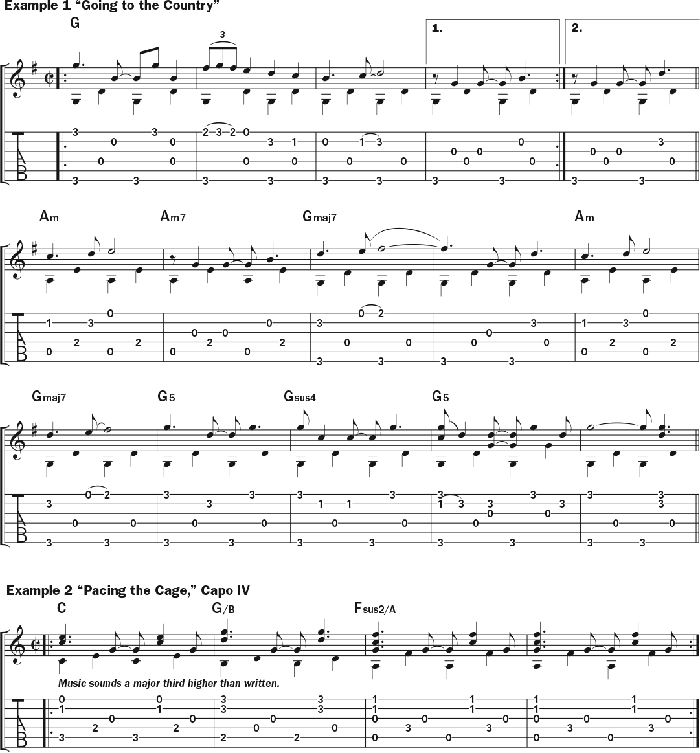

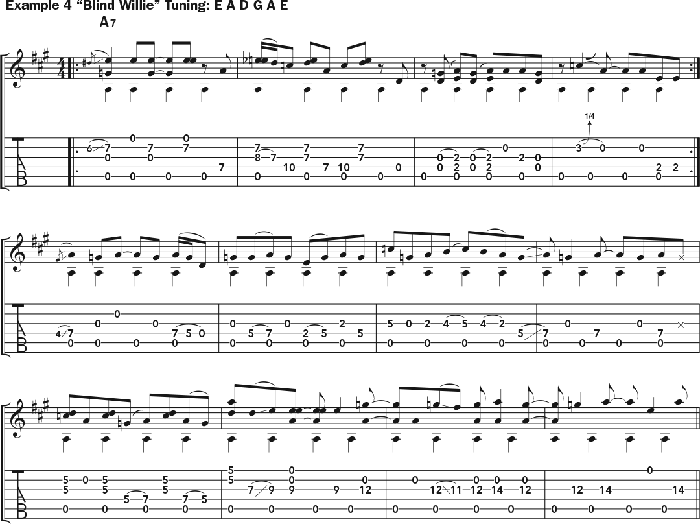
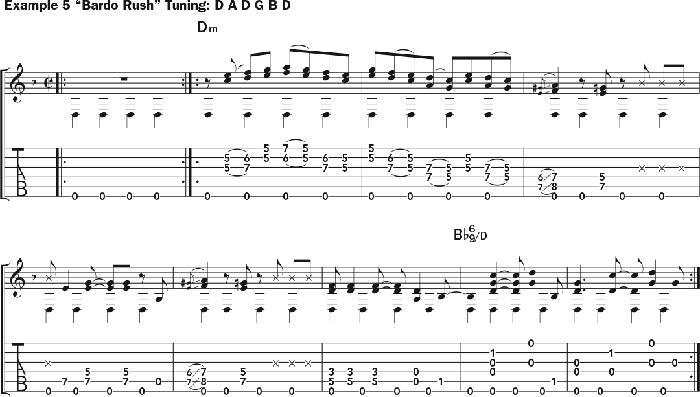
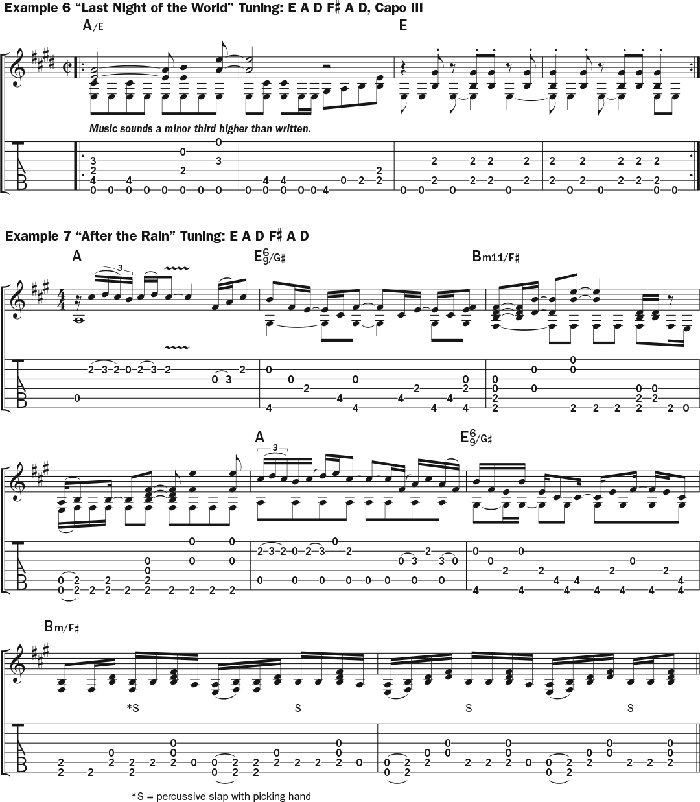
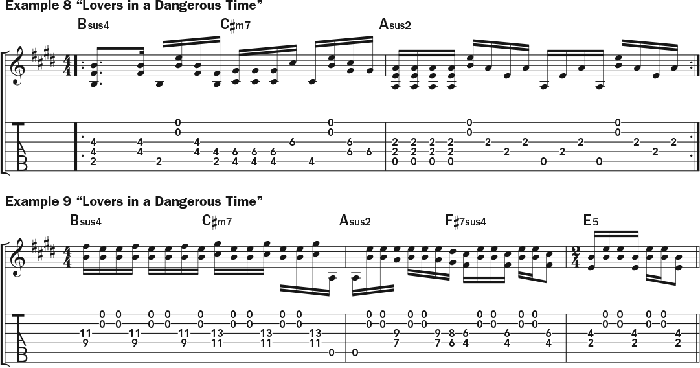
This article originally appeared in the September/October 2019 issue of Acoustic Guitar magazine.
~ from Video Lesson: Bruce Cockburn Teaches His Sophisticated Guitar Style – BY JEFFREY PEPPER RODGERS – the September/October 2019 issue of Acoustic Guitar
Related Articles: Acoustic Classic: If I Had A Rocket Launcher









